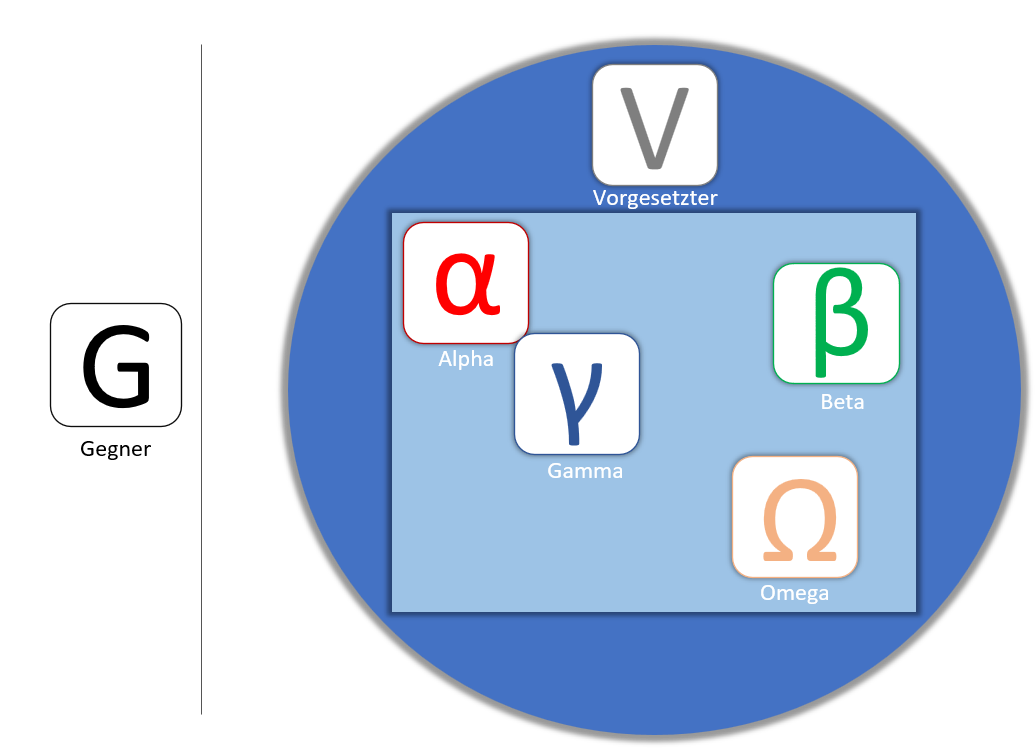Rankings – Roles in the Group
The model developed by Raoul Schindler and Dr. Christian Hanisch describes the roles individuals can assume within a group.
Rankings – Roles in the Group
Rankings – Roles in the Group
Some individuals have a certain tendency towards a role due to their personality and influence. However, it is important to note that the role of members is not defined once and for all and is unchangeable. Instead, the role within the group is highly situational and therefore temporary in nature.

V - Superior - Formal Leader
The formal leader is defined by an implicitly or explicitly predetermined hierarchy. In professional life, this can be the department head, for example. In private life, it can be an authority figure such as a mother or father. The formal leader is therefore not "elected" by the group but "appointed" by external circumstances.
α – Alpha – Informal Leader
The informal leader is generally a person who takes care of the group's concerns and thus gains their approval. The Alpha defines "the direction" in which the group moves. He is accepted as a leader without his position being defined externally.
γ – Gamma – Follower
The Gamma supports the Alpha. He trusts the Alpha and accepts him as a "guide" and opinion leader.
β – Beta – Specialist
The specialist holds a special position within the group. Due to his specialized knowledge, which the group relies on, he has special rights within the group. It is accepted that the specialist defies social rules within certain limits.
Ω – Omega – Troublemaker
The troublemaker is considered a destructive element within a group. There are three different manifestations of the troublemaker.
Poison Pen
The poison pen does not fit into the group and does not wish to fit in. Her behavior is highly destructive. She negatively influences the climate within the group (e.g., bad mood). The rules of good leadership dictate that poison pens must be removed.
Scapegoat
The scapegoat is perceived and treated by the group as the weakest link. The group's behavior towards the scapegoat is highly destructive, even if there is no factual reason for it. The rules of good leadership dictate that scapegoats must be protected.
(Constructive) Critic
The critic questions rules and/or goals and/or processes within the group. He is perceived by the group as destructive but strives for positive change. The rules of good leadership dictate that the critic must be taken seriously and appreciated. His views and questions may seem destructive at the moment, but they contain important aspects that need to be considered or suggestions that can help the group progress towards its goal.
G – Opponent
The opponent of the group can be a person. Generally, however, it is a task or a goal. Defining a common, overarching goal creates cohesion within the group. The opponent should, if present, be outside the overarching structure (e.g., company, organization) as otherwise, conflicts may arise within it, negatively affecting the overall climate.
